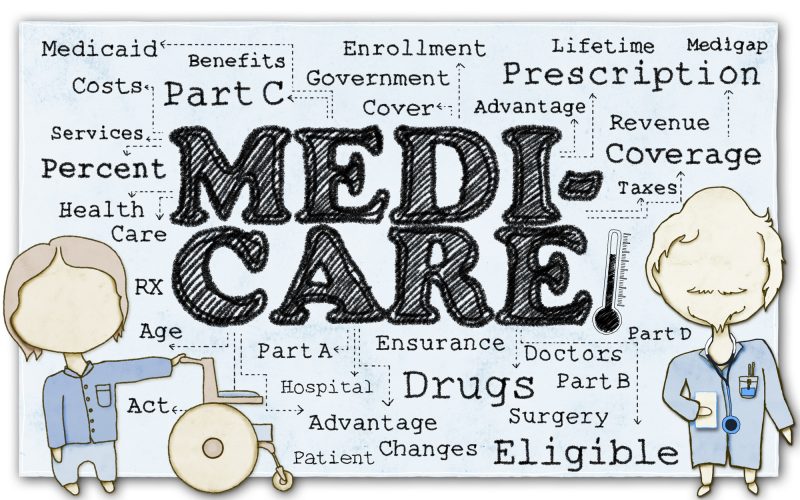As of 2016, there are about 56.8 million people with Medicare.
The Original Medicare (Part A and B) offers coverage for and access to hospitals, doctors and other practitioners who accept Medicare. For some people, this coverage is not adequate, especially when you want to seek treatment outside the U.S.
Well, enter the Medigap plan, a supplemental insurance policy that helps to cover those costs that your Original Medicare doesn’t cover. These include deductibles, copayments, and coinsurance. It also covers some services that Medicare doesn’t.
Medicare enrollees can buy this policy from private insurance companies. So, if you’re looking for one, we present this post to help you find the right plan for you.
Keep on reading to learn more!
Understand The Choices
One thing you need to know is that the federal government has standardized all Medigap plans. A Plan F offered by one company is the same as a Plan F provided by another company. Essentially, there are no package differences in the plans
This makes it easy to compare plans without the complexities of looking at the individual plan features.
The government has created ten different designs for Medigap. This includes A, B, C, D, F, G, K, L, M, and N. Each of these plans is slightly different regarding what it covers. Plus, they are consistent in all but three states: Wisconsin, Massachusetts, and Minnesota, which have their standard policy.
The ten plans are different in several ways. Some require higher cost-sharing, some have a higher deductible, and others cover more costs. This means you should evaluate your needs and pick a plan that best covers the Medicare gap.
You can use the Medigap Policy Search tool on Medicare.gov to find available plans in your area. Just enter your zip code, and you will see a list of available plans and the companies that sell them.
The Plans Have No Ratings
As noted before, all the plans are usually the same no matter what company offers them. Some consumers are usually surprised to find this out because the Medicare Advantage plans have ratings.
The unavailability of ratings for Medigap plans may make it seem hard to pick the right one. But the truth is that it’s easy to find one since you don’t need to look at the plan’s features. Instead, you need to focus on how a specific plan will cover your needs at a reasonable cost.
Most people who purchase a Medigap plan usually go for Plan F or G. This is because Plan F is the most comprehensive while Plan G offers the best price value. So, when looking for a plan, first consider what plan you want before worrying about the specific company to buy from.
Look at the Prices
Just because the plans are usually same doesn’t mean all companies will offer the same price for your desired plan. But you should go for the lowest price offered by a company.
The average nationwide cost of Medigap plan is about $183 per month. There are three criteria that companies use when pricing the plants. They include:
- Community – Here, everyone pays the same monthly premium regardless of age
- Issue age – Your monthly cost depends on your age at the time you buy the plan. The younger you are, the lower your premium. Your age won’t affect the premium cost as you grow.
- Attained age – In this case, the premium for your plan increases as you get older. This can be the costly option in the long run.
Before buying any insurance plan, ensure the insurer has informed you on the kind of pricing system they have in place. This will help you plan your future Medigap budgets accordingly.
If Your Have Pre-Existing Conditions
If you have a Part B enrollee and you’re at least 65 years only, you have a guaranteed right to buy Medigap coverage for six months without being turned down. This is regardless of your pre-existing condition. This is known as “guaranteed issue.”
After the first six months, the right only applies to specific situations. This include:
- You are moving out of your Medicare Advantage plan’s area
- Your Medicare Advantage plan ends
- Your retiree plan ends
- Your Medigap policy ends
Apart from these situations, insurers can turn you down or charge you more if you have pre-existing conditions. However, this may differ from one state to another as it depends on the existing minimum rules for selling Medigap.
As such, if you have any condition and you don’t meet the requirements for “guaranteed issue,” be sure to consult your state insurance department or State Health Insurance Assistance program.
Consider the Insurance Company
Before buying any plan from an insurer, it’s advisable to contact your state insurance department to determine whether the state has licensed the company. It also helps to know if the has ever had complaints before.
Also, review the company’s history of increasing prices as enrollees get older. Some companies increase their premiums as you get older while others don’t. Others can offer the lowest price during your enrollment but increase it more than the competition over time.
It’s good to choose a company that offers discounts to new members or other perks. This can help to save your overall annual cost for your Medigap plan.
Medigap Plan – The Takeaway
Choosing the right Medigap policy is not as complicated as finding the ideal Medicare Advantage plan. All the Medigap plans are standardized. This means that all companies offer the same perks and benefits.
As such, you should pay much attention to the cost and the company that’s selling the plans. But first, you should review your Original Medicare plan to determine the areas that it’s not covering well.
You can also read this post to learn how to find the ideal life insurance that meets your unique needs.
